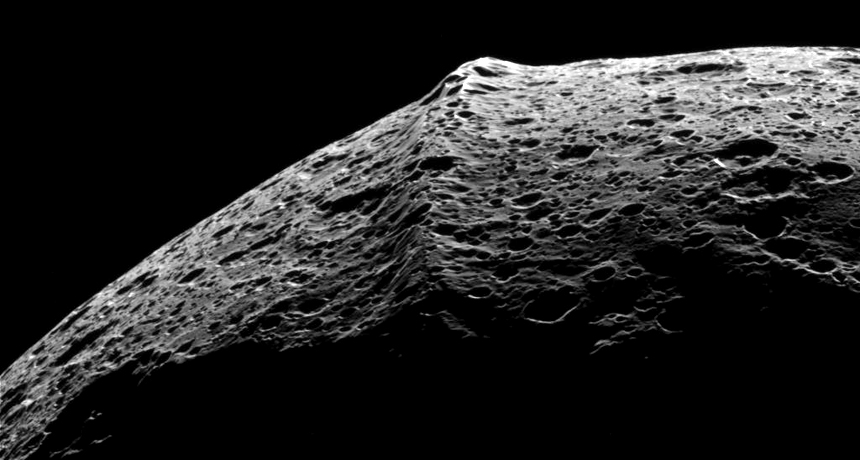Mountains on Saturn moon may have come from space
Ridge around Iapetus’ equator may be built from celestial debris

RING REMNANTS The mighty ridge adorning Saturn’s moon Iapetus has steep slopes, which researchers suggest is a sign that debris falling from space stacked up and formed mountains on the moon’s surface.
JPL, Space Science Institute, NASA







